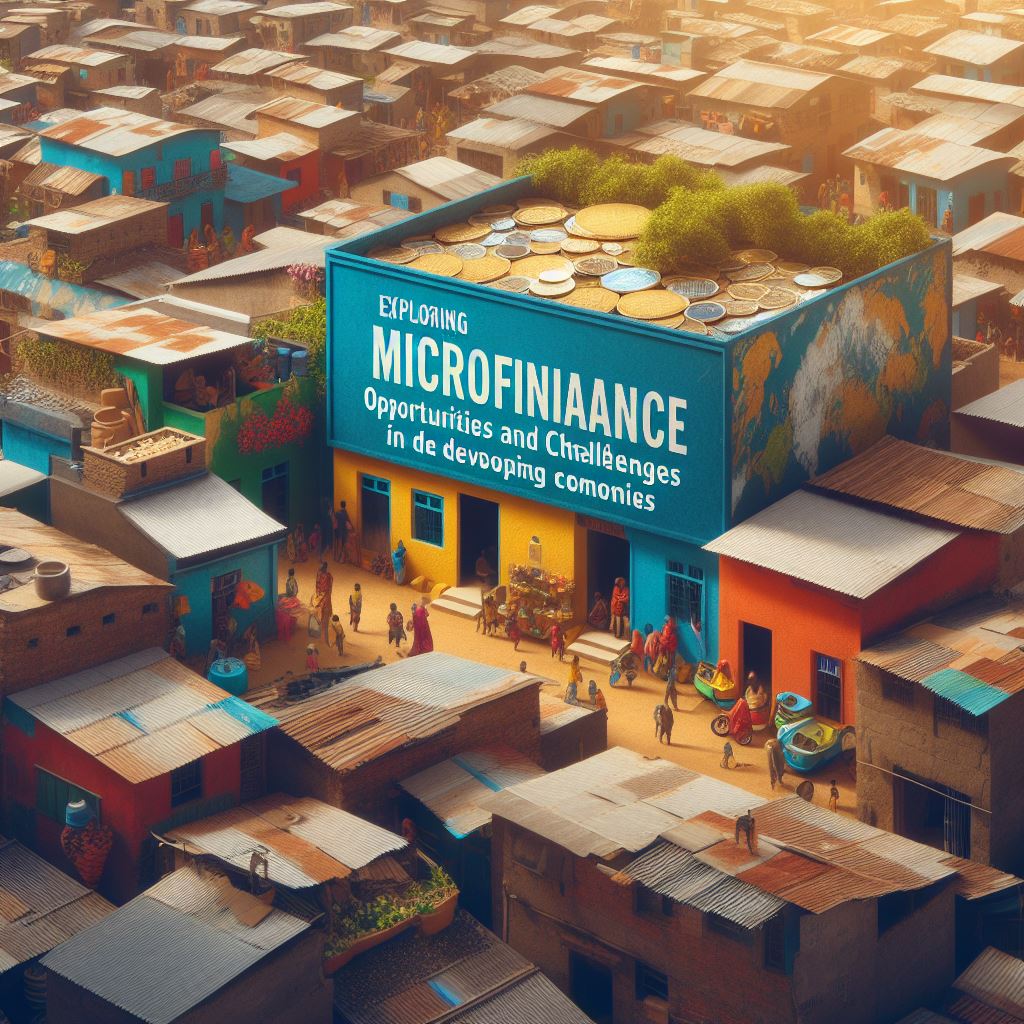Understanding Microfinance in Developing Economies
Microfinance, a critical development tool, offers financial services to low-income individuals in emerging markets who are traditionally excluded from conventional banking systems. These services include microloans, savings accounts, insurance, and more, aimed at empowering individuals to start businesses, cover health expenses, and improve their living conditions.

What is Microfinance?
Microfinance involves providing small loans and other financial services to people who do not have access to traditional financial services. It’s not just about lending money but also about providing a toolkit for financial inclusion and poverty alleviation.
The Evolution and Expansion of Microfinance
From its initial projects in the late 1970s, microfinance has grown to a global phenomenon, witnessing significant transformations. Institutions now offer a broader range of financial products and have begun to integrate technology to reach more clients effectively.
Empowering Low-Income Individuals Through Microfinance
Microfinance institutions play a pivotal role in economic empowerment by providing tools and resources necessary for growth. They help individuals escape the cycle of poverty by fostering entrepreneurship and enabling income-generating activities.
How Microfinance Institutions Empower the Economically Disadvantaged
By offering loans, savings accounts, and even financial training, microfinance institutions help build a foundation for economic independence and security. These tools empower individuals to expand small businesses, improve their homes, and better manage financial emergencies.
Case Studies: Success Stories from Around the Globe
Across continents, microfinance has transformed lives. In Bangladesh, for example, microloans have helped women start businesses, boosting their families’ incomes and societal status. Similar stories in Africa and Latin America highlight microfinance’s role in social and economic upliftment.
Financial Products Offered by Microfinance Institutions
Beyond loans, many institutions offer insurance products, savings accounts, and even pensions, tailored to the needs of the economically disadvantaged. These products are crucial in building a safety net for the future.
The Role of Microfinance in Women’s Empowerment
Women, often the most economically marginalized group, benefit significantly from microfinance. It provides them not just with financial resources but also with opportunities for greater participation in their communities and economies.
Improving Household and Community Well-being
Access to microfinance can lead to improved health, education, and overall well-being of entire communities. When individuals thrive, they invest in their surroundings, creating a ripple effect of development and prosperity.
Challenges Faced by Women in Accessing Microfinance
Despite the benefits, women face unique challenges in accessing microfinance, including societal norms, legal restrictions, and lack of collateral. Addressing these barriers is crucial for the broader success of microfinance initiatives.
Challenges Facing Microfinance in Emerging Markets
While microfinance has a robust potential for impact, it faces significant challenges that can hinder its effectiveness and reach.
Financial Sustainability of Microfinance Institutions
The sustainability of these institutions often comes into question. They must balance their social mission with financial health to continue operating and serving their clients.
Issues with Loan Repayment and Default Rates
High default rates can jeopardize the financial stability of microfinance institutions. Effective strategies are needed to manage risk and ensure that borrowers can repay their loans without falling into debt traps.
Balancing Social Goals with Financial Viability
Microfinance institutions must navigate the fine line between pursuing social objectives and maintaining financial viability. This balance is crucial for long-term sustainability and the ability to serve more clients.
Regulatory Challenges and Market Stability
Regulations can either foster or hinder the growth of microfinance. Stable and supportive regulatory environments are essential for the health of microfinance institutions and their ability to contribute to economic development.

The Effect of Economic Instability on Microfinance
Economic downturns and instability can impact the performance of microfinance institutions, affecting their ability to lend and sustain operations. Adapting to these conditions is essential for continued success.
Technological Innovations in Microfinance
Technology plays a transformative role in the microfinance sector, enabling institutions to reach more people and offer more efficient and secure services.
Leveraging Technology for Microfinance Solutions
Innovations like mobile banking, digital payment systems, and blockchain technology have revolutionized the way microfinance institutions operate, making financial services more accessible and cost-effective.
Mobile Banking and Microfinance
Mobile banking allows clients in remote areas to perform transactions, access financial services, and manage their accounts without needing physical bank branches, significantly expanding the reach of microfinance services.
The Impact of Blockchain and Cryptocurrencies on Microfinance
Blockchain technology offers transparency, security, and efficiency in transactions, which are critical in building trust and reducing costs in microfinance operations. Cryptocurrencies, although still emerging, may offer new ways for fund transfer and loan disbursement.
Future Directions in Microfinance
As we look to the future, microfinance is poised to evolve in ways that incorporate broader economic trends and innovations.
Trends and Predictions for the Future of Microfinance
The future of microfinance includes greater integration with national and global financial systems, increased focus on sustainable practices, and expanded access through technology.
Integrating Environmental Sustainability
Sustainability is becoming a core component of the microfinance agenda. Institutions are increasingly looking at how they can contribute not only to economic but also environmental sustainability.
Expanding Access to Microfinance Services
Future initiatives aim to broaden the reach of microfinance, ensuring that more people can benefit from its services. This includes deepening the penetration into rural areas and marginalized communities.
FAQs about Microfinance in Developing Economies
- What is microfinance and who does it serve? Microfinance refers to the provision of financial services to individuals or groups who lack access to conventional banking services. It primarily serves low-income individuals in developing countries, helping them to start businesses, fund education, or improve living conditions.
- How do microfinance institutions empower low-income individuals? By providing financial products and education, microfinance institutions help low-income individuals build assets, increase income, and reduce their vulnerability to economic stress.
- What are the major challenges faced by microfinance institutions? Key challenges include maintaining financial sustainability, managing high default rates, navigating regulatory environments, and integrating new technologies.
- How does microfinance impact women in developing economies? Microfinance significantly impacts women by providing them with the financial tools to participate more fully in the economy, thereby improving their social standing and contributing to overall economic development.
- How is technology changing the landscape of microfinance? Technology, such as mobile banking and blockchain, is making financial services more accessible and efficient, allowing microfinance institutions to reach a wider audience at a lower cost.
- What is the future of microfinance in developing economies? The future of microfinance lies in its ability to adapt to technological advancements, integrate with broader financial systems, and continue to innovate in ways that serve its clients more effectively.
Conclusion
Microfinance remains a vital tool in economic development, particularly in developing economies. While challenges persist, the integration of technology and strategic innovations promise to enhance its effectiveness and reach. The road ahead for microfinance is one of adaptation, innovation, and expanded impact, offering continued hope and opportunities for low-income individuals around the world.